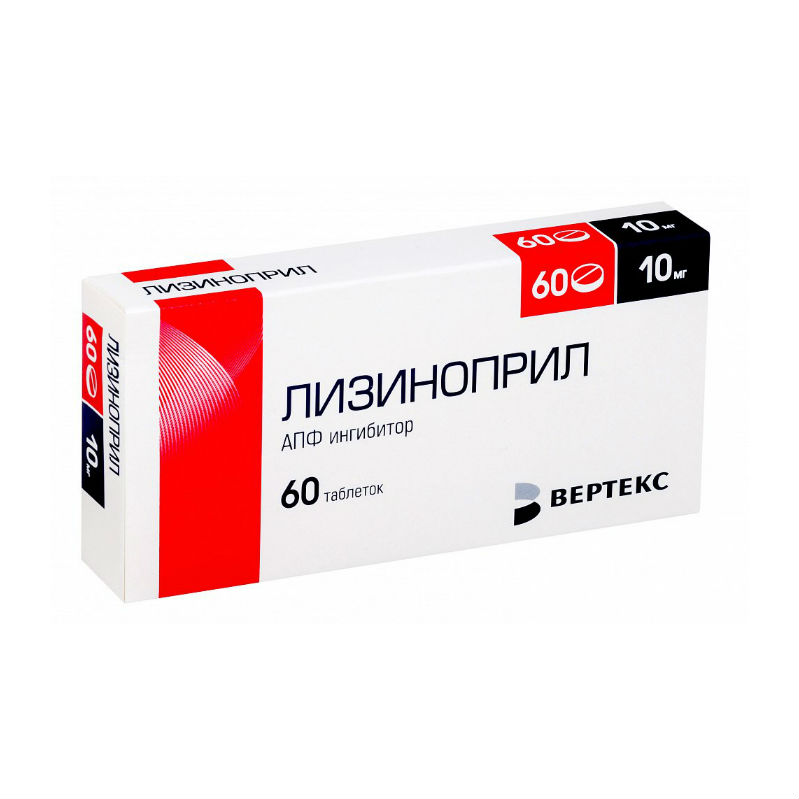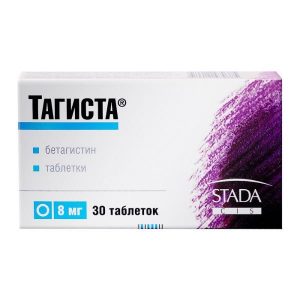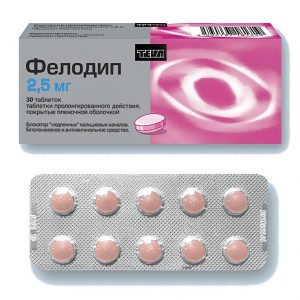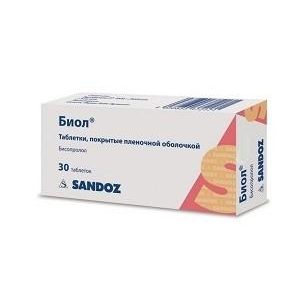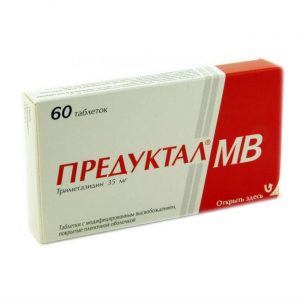Description
release form
tablets
Packaging
60 pcs
Indications
Arterial hypertension (in monotherapy or in combination with other antihypertensive drugs).
Chronic heart failure (as part of combination therapy for the treatment of patients taking cardiac glycosides and / or diuretics).
Early treatment for
of severe myocardial infarction as part of combination therapy (in the first 24 hours with stable hemodynamic parameters to maintain these parameters and prevent left ventricular dysfunction and heart failure).
Diabetic nephropathy (decreased albuminuria in patients with type 1 diabetes mellitus with normal blood pressure, and patients with type 2 diabetes mellitus with arterial hypertension).
Use during pregnancy and lactation
The use of lisinopril during pregnancy is contraindicated. When pregnancy is established, the drug Lisinopril should be discontinued as soon as possible.
Reception of ACE inhibitors in the II and III trimester of pregnancy has an adverse effect on the fetus (a pronounced decrease in blood pressure, renal failure, hyperkalemia, hypoplasia of the bones of the skull, intrauterine death are possible).
There is no data on the adverse effects of the drug on the fetus if used during the first trimester. For newborns and infants who underwent intrauterine exposure to ACE inhibitors, it is recommended to conduct careful monitoring to timely detect a pronounced decrease in blood pressure, oliguria, hyperkalemia.
Lisinopril crosses the placenta. There is no data on the penetration of lisinopril into breast milk. If taking Lisinopril is necessary during lactation, then breastfeeding must be canceled.
Composition
1 tablet contains:
Active ingredient:
lisinopril dihydrate (corresponds to lisinopril) 10 mg,
Excipients:
milk sugar (lactose)
MCC
starch 1500 (pregelatinized) aerosil (silicon dioxide colloidal) srdlc magnesium srdlp.
Dosage and administration
Inside, once a day in the morning, regardless of food intake, preferably at the same time.
In case of arterial hypertension, patients not receiving other antihypertensive drugs are prescribed 5 mg once a day. In the absence of effect, the dose is increased every 2-3 days by 5 mg to an average therapeutic dose of 20-40 mg / day (increasing the dose above 40 mg / day usually does not lead to a further decrease in blood pressure). The usual daily maintenance dose is 20 mg.
The maximum daily dose is 40 mg.
The full effect usually develops after 2-4 weeks from the start of treatment, which should be considered when increasing the dose. With insufficient clinical effect, it is possible to combine the drug with other antihypertensive drugs.
If the patient received preliminary treatment with diuretics, then the administration of such drugs must be stopped 2-3 days before the start of the drug Lisinopril. If this is not possible, then the initial dose of lisinopril should not exceed 5 mg per day. In this case, after taking the first dose, medical monitoring is recommended for several hours (the maximum effect is achieved after about 6 hours), since a marked decrease in blood pressure may occur.
In case of renovascular hypertension or other conditions with increased activity of the renin-angiotensin-aldosterone system, it is also advisable to prescribe a low initial dose of 5 mg per day, under enhanced medical supervision (control of blood pressure, renal function, serum potassium ion content). A maintenance dose, continuing strict medical supervision, should be determined depending on the dynamics of blood pressure.
In case of renal failure due to the fact that lisinopril is excreted by the kidneys, the initial dose should be determined depending on the creatinine clearance. Further, the selection of doses should be made depending on individual reactions with regular monitoring of renal function, serum potassium, sodium.
Creatinine clearance,
ml / min Initial dose,
mg / day
30-70 5-10
10-30 5
(including patients on hemodialysis)
With persistent arterial hypertension, long-term maintenance therapy of 10-15 is indicated mg / day
In chronic heart failure: the initial dose is 2.5 mg per day, with a gradual increase in 3-5 days to 5-10 mg per day. The maximum daily dose is 20 mg.
Acute myocardial infarction (as part of combination therapy): in the first 24 hours – 5 mg, then 5 mg every other day, 10 mg after two days and then 10 mg once a day. The course of treatment is at least 6 weeks.
In the case of a prolonged marked decrease in blood pressure (systolic blood pressure less than 90 mm Hg. Art. more than 1 hour), drug treatment should be discontinued.
Diabetic nephropathy: in patients with type 2 diabetes, 10 mg of the drug Lisinopril is used once a day. The dose can, if necessary, be increased to 20 mg once a day in order to achieve diastolic blood pressure values below 75 mm Hg. in the sitting position. In patients with type 1 diabetes mellitus, the dose is the same, in order to achieve diastolic blood pressure values below 90 mm Hg. in the sitting position.
Side effects
The incidence of side effects is characterized as often (1%), rarely (1%).
The most common side effects: dizziness, headache, fatigue, diarrhea, dry cough, nausea.
From the cardiovascular system: often – a marked decrease in blood pressure, orthostatic hypotension rarely – chest pain, tachycardia, bradycardia, exacerbation of symptoms of chronic heart failure, violation of atrioventricular conduction, myocardial infarction.
From the central nervous system: often – paresthesia, lability of mood, confusion, drowsiness, convulsive twitching of the muscles of the limbs and lips, rarely – asthenic syndrome.
From the hemopoietic organs: rarely – leukopenia, neutropenia, agranulocytosis, thrombocytopenia, with prolonged treatment – anemia (decreased hemoglobin, hematocrit, erythropenia).
From the respiratory system: rarely – shortness of breath, bronchospasm.
From the digestive system: rarely – dry oral mucosa, anorexia, dyspepsia, taste changes, abdominal pain, pancreatitis, jaundice (hepatocellular or cholestatic), hepatitis.
From the skin: rarely – urticaria, pruritus, increased sweating, alopecia, photosensitivity.
From the genitourinary system: rarely – impaired renal function, oliguria, anuria, acute renal failure, uremia, proteinuria, decreased potency.
Laboratory indicators: often – hyperkalemia, hyponatremia rarely – hyperbilirubinemia, increased activity of “liver” enzymes, hypercreatininemia, increased concentration of urea and creatinine.
Allergic reactions: rarely – angioedema of the face, limbs, lips, tongue, epiglottis and / or larynx, skin rashes, skin itching, fever, false-positive antinuclear antibody test results, increased erythrocyte sedimentation rate (ESR), eosinophilia, leukocytes. In rare cases – intestinal angioedema.
Other: arthralgia / arthritis, vasculitis, myalgia.
Drug interaction
With the simultaneous use of the drug with potassium-sparing diuretics (spironolactone, triamterene, amiloride), potassium, salt substitutes containing potassium, cyclosporine, increased risk of development of gyno therefore, they can only be used jointly with regular monitoring of serum potassium ions and renal function.
Combined use of lisinopril with beta-blockers, “slow” calcium channel blockers (BMCs), diuretics, tricyclic antidepressants / neuroleptics and other antihypertensive agents increases the severity of hypotensive activity.
Lisinopril slows the elimination of lithium drugs. Therefore, when combined, it is necessary to regularly monitor the concentration of lithium in the serum.
Antacids and cholestyramine reduce lisinopril absorption in the gastrointestinal tract.
When combined with insulin and hypoglycemic agents, the risk of developing hypoglycemia may be possible.
Non-steroidal anti-inflammatory drugs (NSAIDs) (incl. selective inhibitors of cyclooxygenase-2 (COX-2)), estrogens, adrenomimetics reduce the hypotensive effect of lisinopril.
With the simultaneous use of ACE inhibitors and gold preparations intravenously (sodium aurothiomalate), a symptom complex including facial hyperemia, nausea, vomiting, and BP reduction has been described.
When used together with selective serotonin reuptake inhibitors can lead to marked hyponatremia.
Co-administration with allopurinol, procainamide, cytostatics can lead to leukopenia.
Overdose
Symptoms (occur with single dose of 50 mg): marked decrease in blood pressure, dryness of the oral mucosa, drowsiness, urinary retention, constipation, anxiety, irritability.
Treatment: There is no specific antidote. Symptomatic therapy. Gastric lavage, the use of enterosorbents and laxatives. The intravenous administration of 0.9% sodium chloride solution is shown. In the case of bradycardia resistant to treatment, the use of an artificial rhythm driver is required. It is necessary to control blood pressure, water-electrolyte balance. Hemodialysis is effective.
Storage conditions
In a dry, dark place at a temperature of no higher than 25 ° C.
Expiration
2 Year
Deystvuyuschee substances
Lisinopril
pharmacy terms of prescription
dosage form
Dosage form
tablets
Vertex, Russia
